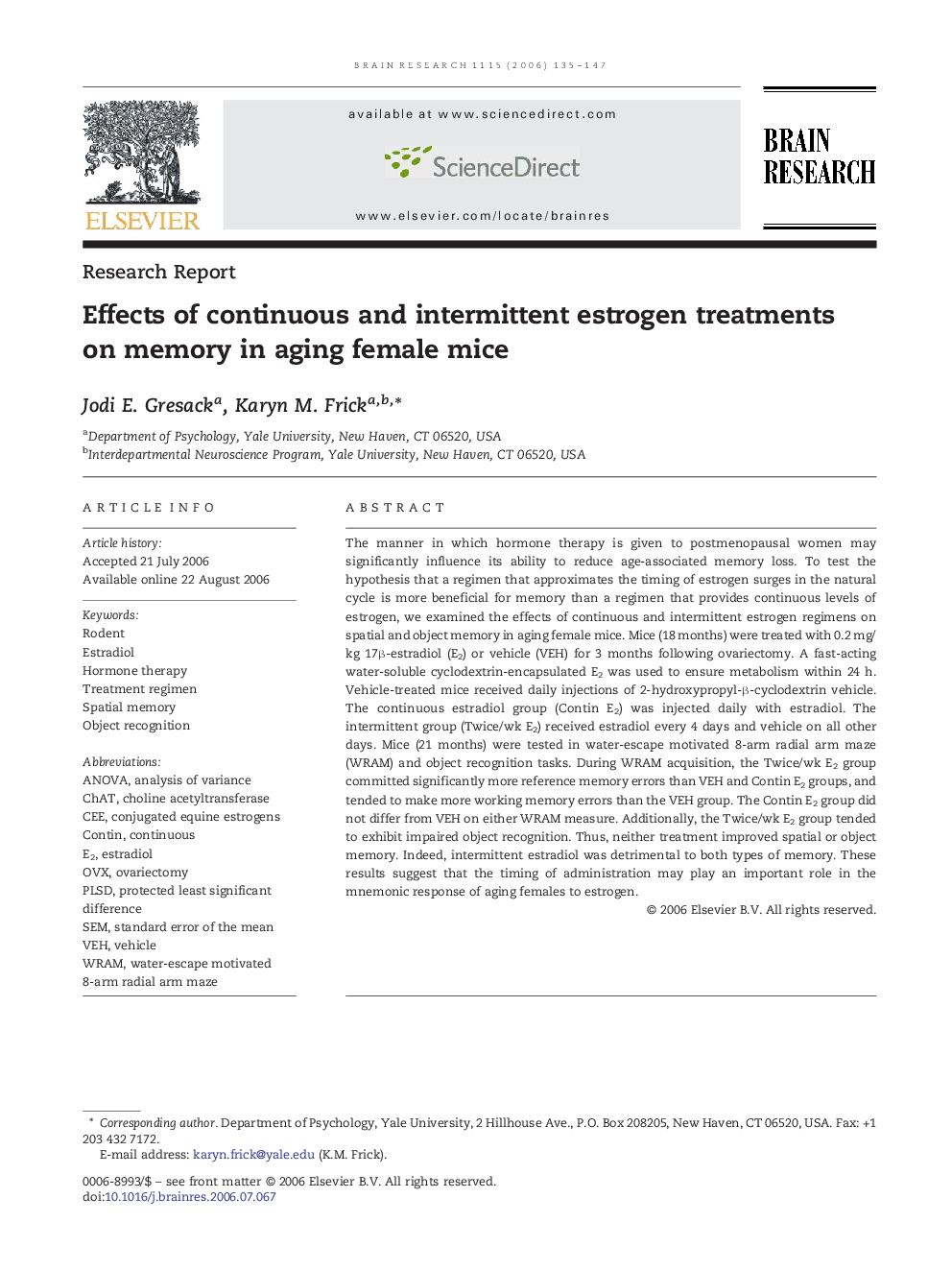| Article ID | Journal | Published Year | Pages | File Type |
|---|---|---|---|---|
| 4332295 | Brain Research | 2006 | 13 Pages |
The manner in which hormone therapy is given to postmenopausal women may significantly influence its ability to reduce age-associated memory loss. To test the hypothesis that a regimen that approximates the timing of estrogen surges in the natural cycle is more beneficial for memory than a regimen that provides continuous levels of estrogen, we examined the effects of continuous and intermittent estrogen regimens on spatial and object memory in aging female mice. Mice (18 months) were treated with 0.2 mg/kg 17β-estradiol (E2) or vehicle (VEH) for 3 months following ovariectomy. A fast-acting water-soluble cyclodextrin-encapsulated E2 was used to ensure metabolism within 24 h. Vehicle-treated mice received daily injections of 2-hydroxypropyl-β-cyclodextrin vehicle. The continuous estradiol group (Contin E2) was injected daily with estradiol. The intermittent group (Twice/wk E2) received estradiol every 4 days and vehicle on all other days. Mice (21 months) were tested in water-escape motivated 8-arm radial arm maze (WRAM) and object recognition tasks. During WRAM acquisition, the Twice/wk E2 group committed significantly more reference memory errors than VEH and Contin E2 groups, and tended to make more working memory errors than the VEH group. The Contin E2 group did not differ from VEH on either WRAM measure. Additionally, the Twice/wk E2 group tended to exhibit impaired object recognition. Thus, neither treatment improved spatial or object memory. Indeed, intermittent estradiol was detrimental to both types of memory. These results suggest that the timing of administration may play an important role in the mnemonic response of aging females to estrogen.
